Arizona legislative candidates have been raising millions of dollars from voters and special interests to fuel the barrage of mail, text and digital advertising that fuel their campaigns.
And now that the final big round1 of campaign finance reports for this election are public, you can finally get a peek at who’s paying for your politicians.
Sorry if you already voted without knowing that. The politicians set their own campaign finance deadlines.
We spent the day combing through the numbers, which cover the fundraising period ending October 1, and tracking down some big-picture stats that will help you understand the lay of the land in the five key legislative districts that will determine who controls the state Legislature.
Like, who has raised the most and who has the most money left to spend during this crucial final stretch of the election?
Who already burned through their war chests before voters started casting ballots?
And where are the independent expenditure committees — those special interest groups that funnel millions into helping their favorite politicians — spending their money?
The amount of money flowing into our politicians’ coffers has vastly increased in the past decade and a half, starting with the 2010 Citizens United U.S. Supreme Court decision that unleashed a cascade of unrestricted “dark money” from corporations and unions funding our politicians. A few years later, Arizona vastly increased the amount of money individuals can give to candidates. Then came Arizona’s 2015 campaign finance overhaul, which further opened the floodgates of money in politics.
Fifteen years ago, legislative campaigns rarely cracked the six-figure mark.
These days, a competitive seat often costs millions to win.
So, who’s got the money in the five legislative districts that will determine if Republicans or Democrats control Arizona’s state government?
And which of these districts are sucking up most of the resources this campaign season?
Our first graph should help explain.
Next, let’s look at the most successful legislative fundraisers in the state.
Republican Rep. Matt Gress, who is seeking reelection to his central Phoenix House seat, has pulled in the largest haul of the several hundred legislative candidates this cycle, nearing $600,000 total.
But it’s worth noting he’s the only Republican on the top-five list.
And former Democratic lawmaker Kelli Butler and her running mate, Karen Gresham, who are facing Gress in the race for two House seats in Legislative District 4, are close behind, with each raking in nearly a half-million as of the end of the reporting period.
Not surprisingly, most of the biggest fundraisers are also the biggest spenders.
Democratic Rep. Judy Schwiebert, who is running for the Senate in her north-central Phoenix district, is nearing the half-million mark in spending.
But the next biggest spender is Kevin Volk, a Democrat seeking a House seat in Southern Arizona’s Legislative District 17, which is dominated by Republicans. Democratic Sen. Christine Marsh, who is seeking reelection in LD4, also made the top five, while her opponent, Republican Christine Werner, has spent less than half as much.
And while Democrats dominated the previous graph, it also means that they don’t have as much money left to spend during the final month of the campaign.
Four out of five candidates with the most cash on hand to fuel that final stretch are Republicans, including LD2 Sen. Shawnna Bolick, LD17 Senate candidate Vince Leach and LD2 House candidate Justin Wilmeth. Rep. Lorena Austin, who is seeking reelection in LD9, is the only Democrat who made the top five.
Yet not all Republicans in competitive districts are in that enviable position of having a healthy bankroll to coast through November.
Notably, Republican Ari Bradshaw, who is running for a House seat in Phoenix’s LD2, has just $4,000 left as of October 1. Volk had also spent most of his wad. Republicans Chris Lopez and Rep. Teresa Martinez, who are running for the House in the Republican-leaning LD16, which covers Pinal County, are down to their last dollars. Democratic Sen. Eva Burch, who’s seeking reelection in LD9, rounds out the list.
But candidates only make up a fraction of the total spending on a race.
Outside interest groups known as “independent expenditure” groups can collect unlimited amounts of money from other PACs, corporations or unions, and spend it boosting their favorite politicians — or tearing down the politicians they hate.
So far this cycle, IE groups have spent almost $8 million in these five competitive districts.
The candidates themselves have only spent a little more than $5 million.
In many cases, these “IE” groups spend the bulk of the money to get candidates elected.
For some candidates — including LD9 House Republican candidate Mary Ann Mendoza, LD17 Republican Reps. Cory McGarr and Rachel Jones, the independent expenditure groups are carrying them to the finish line.
IEs are also more likely to get down in the dirt than the candidates themselves.
Overall, more than 40% of the IE spending in these five competitive districts has gone toward attack ads.
But some candidates get attacked more than others.
A handful of legislative candidates have racked up far more IE spending against them than supporting them.
There is one more campaign finance reporting period before the election, but it covers less than three weeks of fundraising.




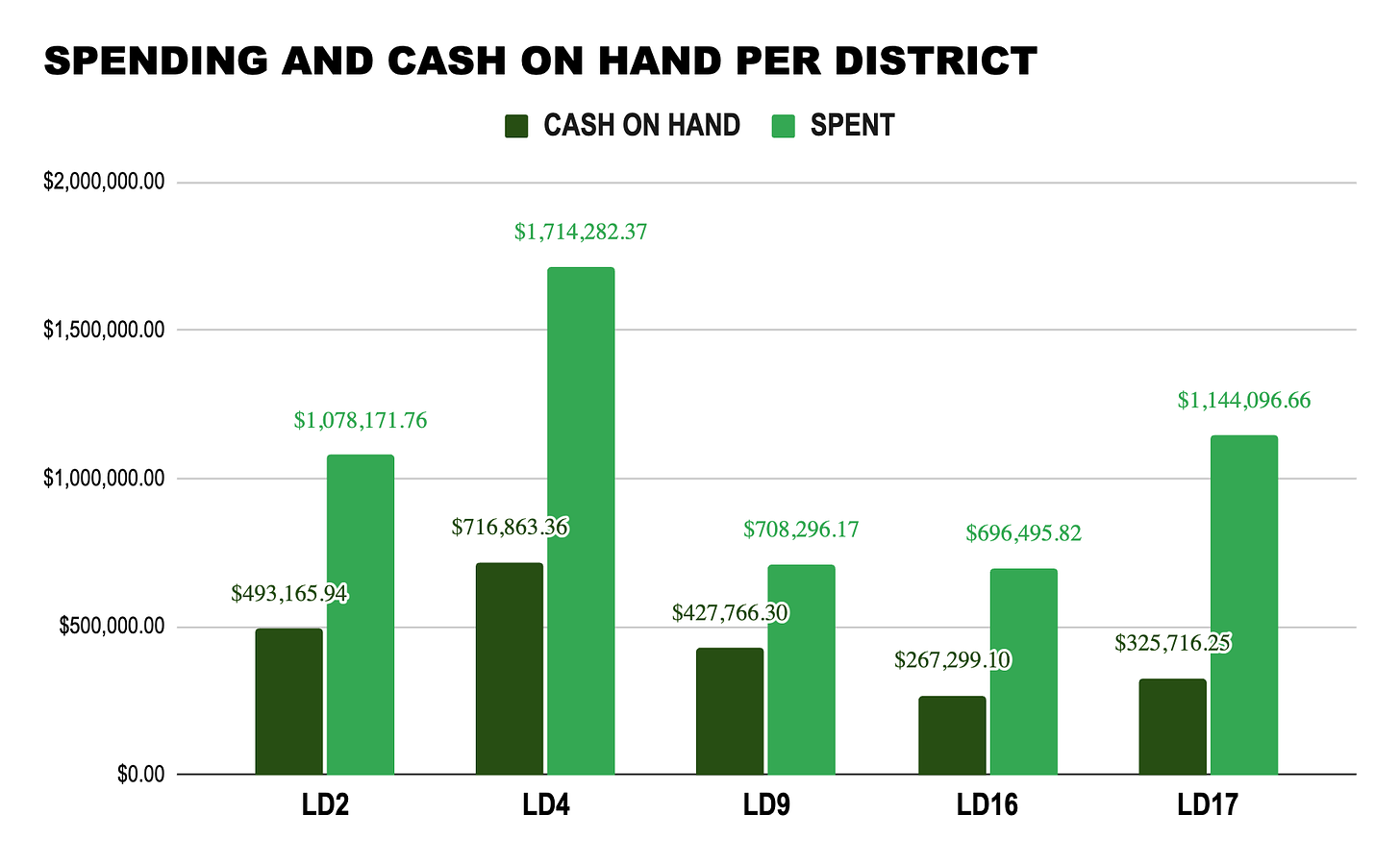
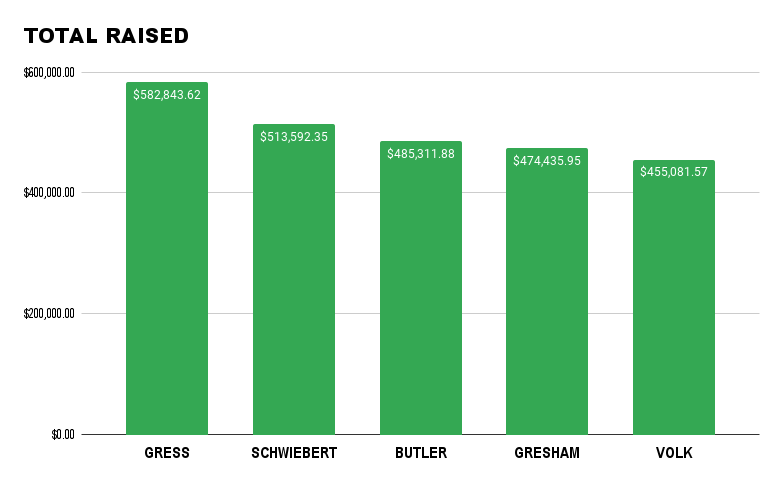
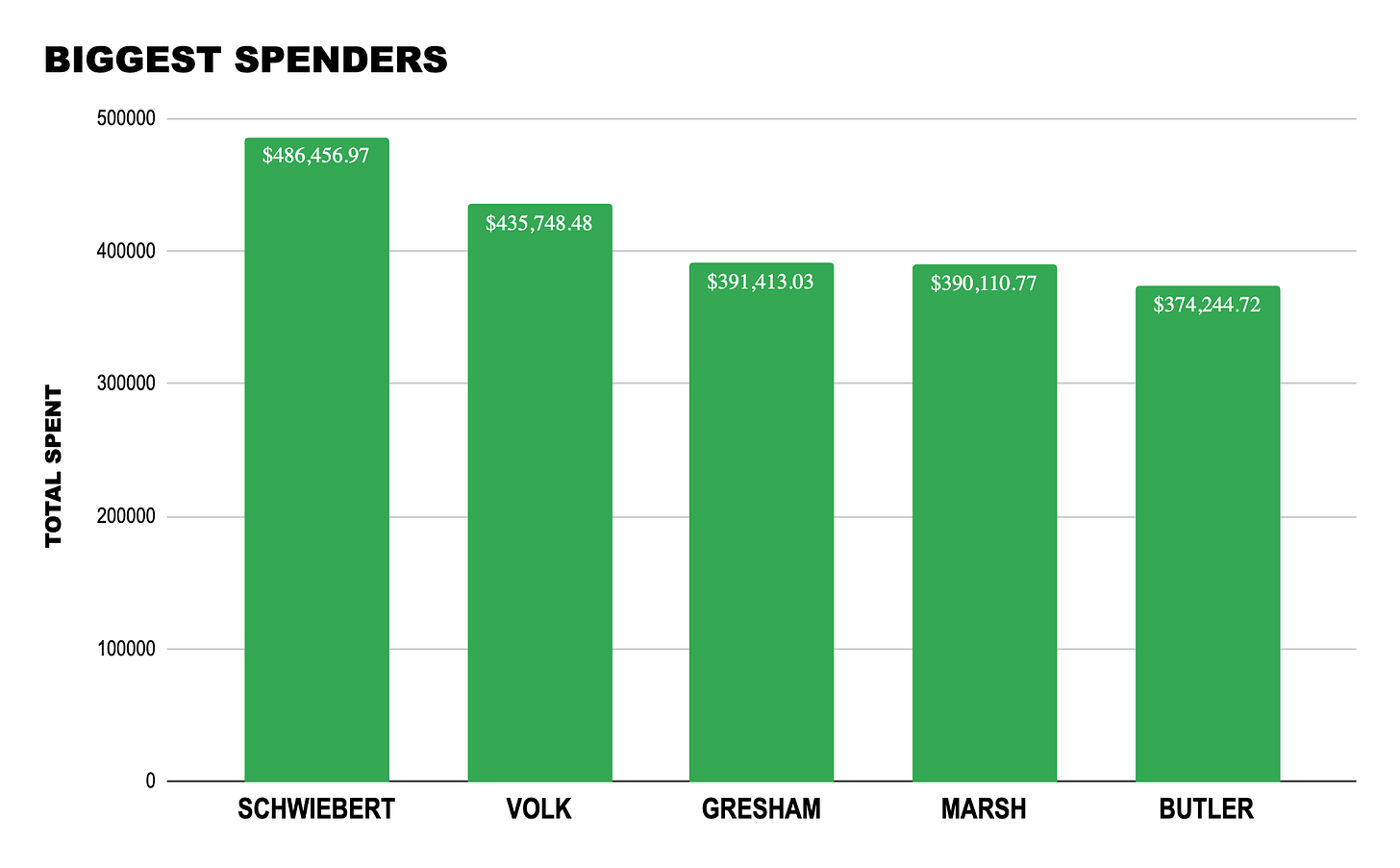

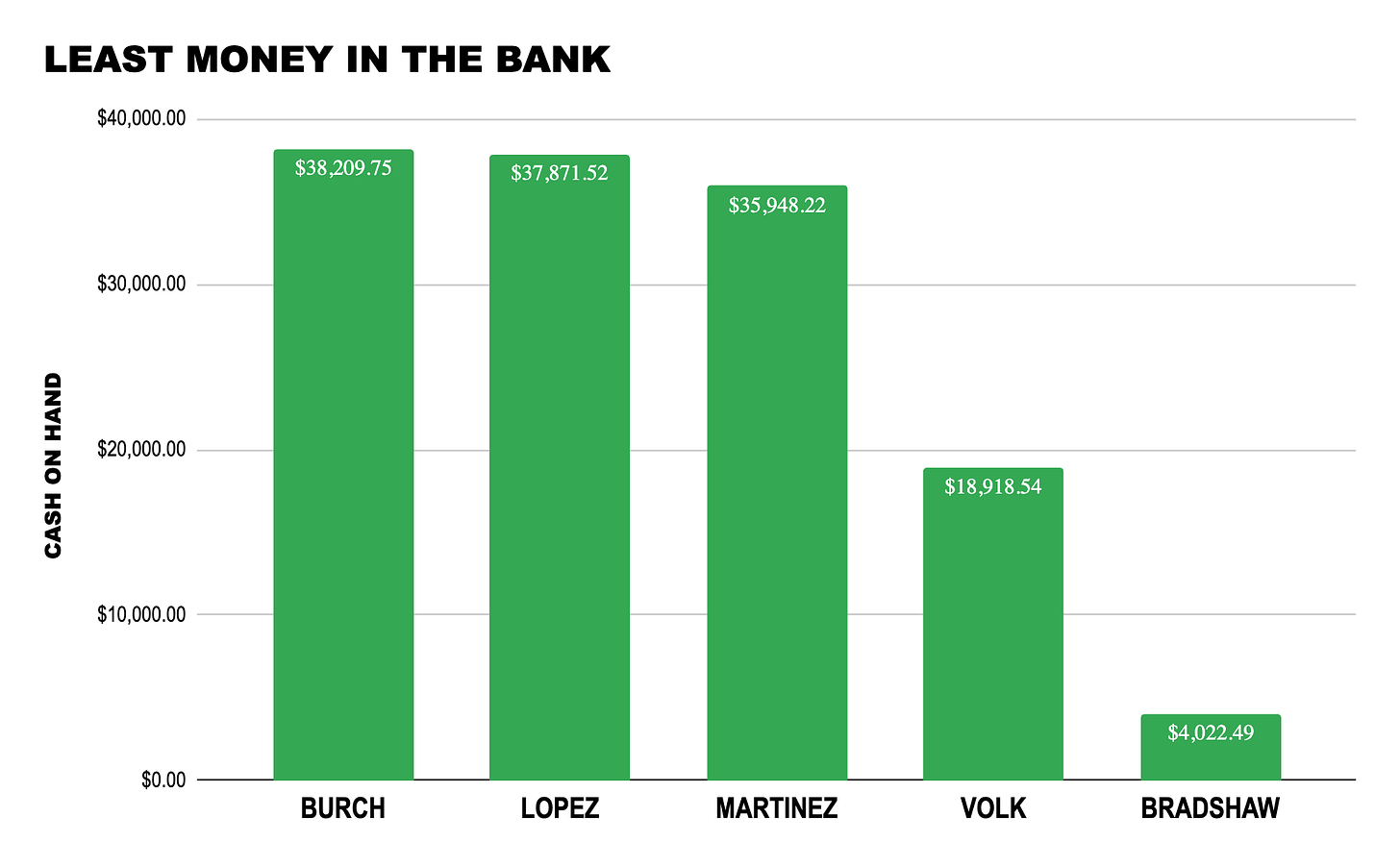

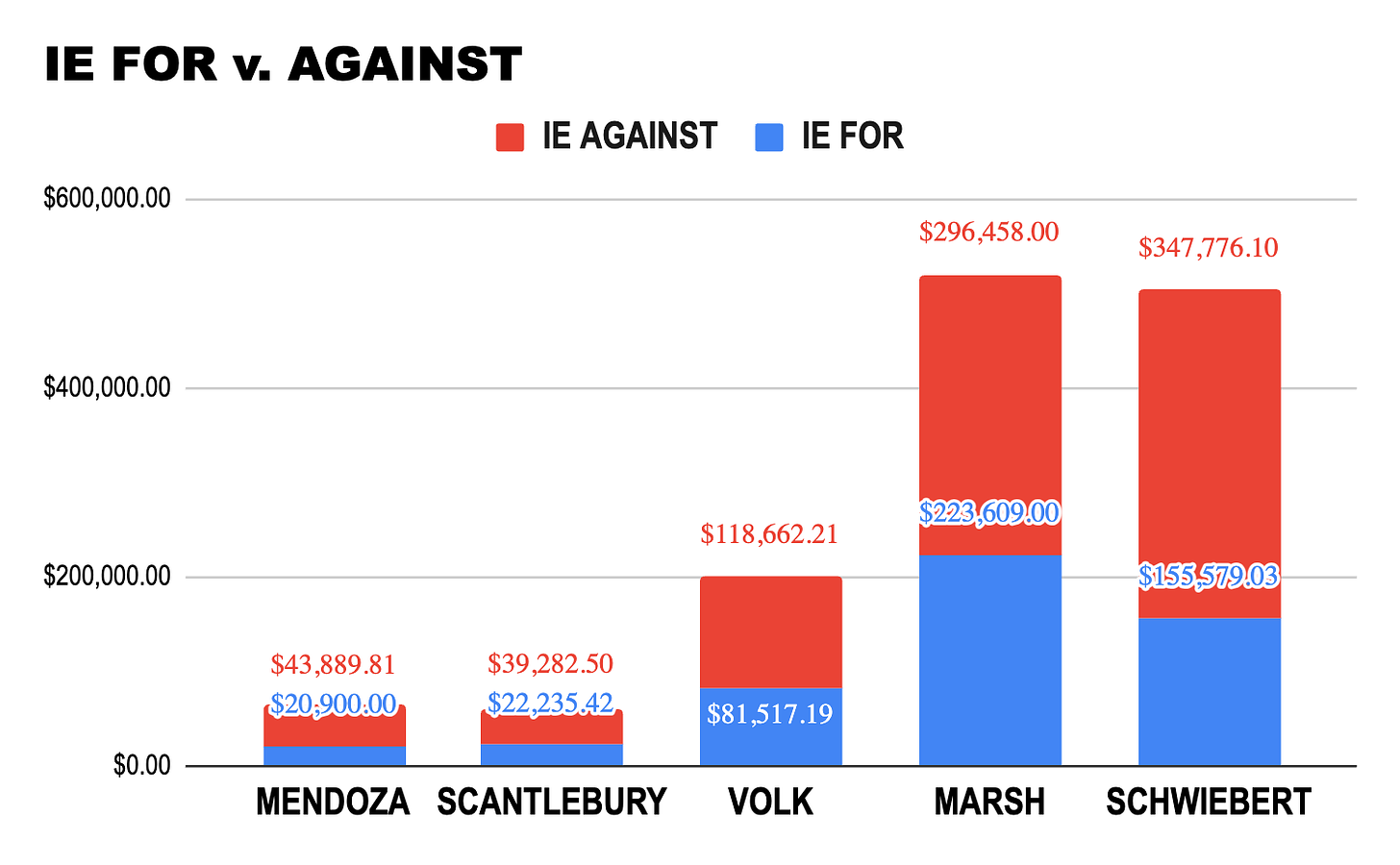
I had to take time to leave a comment; this was an absolutely fabulous breakdown. I'm running for office right now and still learned a ton.
Thank you for the amazing work you do. I'm proud to be a subscriber.
Another interesting stat is comparing the campaign expenditure (non-IE) by a candidate committee vs the campaign expenditure for their opponent. Those funds typically go farther than the IE ones, and the comparison adds additional information (and also can make another district beyond these look competitive). Interestingly, the most effect campaign techniques (e.g., canvassing by the candidate and unpaid surrogates) cost the least.
While the evidence about the effectiveness of expensive approaches like direct mail is minimal, see this study for one study that showed minimal effects: https://www.researchgate.net/publication/228742116_For_Want_of_a_Nail_Field_Experimental_Evidence_on_the_Effectiveness_of_Direct_Mail_in_a_Political_Campaign